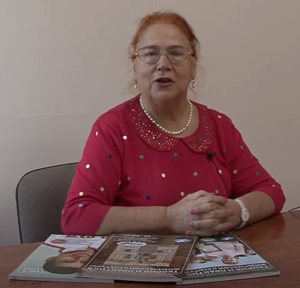Comparative characteristics of body weight indicators of students and cadets according to the results of bioimpedance analysis
ˑ:
PhD, Associate Professor A.G. Galimova1
Dr. Hab., Professor M.D. Kudryavtsev2, 3, 5
PhD, Associate Professor A.Yu. Osipov2, 4, 5
Dr. Hab., Professor T.L. Kamoza2
1East Siberian Institute of the Ministry of Internal Affairs of the Russian Federation, Irkutsk
2Siberian Federal University, Krasnoyarsk
3Reshetnev Siberian State University of Science and Technology, Krasnoyarsk
4Prof. V.F. Voino-Yasenetsky Krasnoyarsk State Medical University, Krasnoyarsk
5Siberian Law Institute of the Ministry of Internal Affairs of Russia, Krasnoyarsk
Objective of the study was to comparative assessment of body composition indicators of students and cadets based on bioimpedance analysis.
Methods and structure of the study. Testing was used on 40 people, of which 20 students of the Irkutsk National Research Technical University, who formed the control group of subjects, and 20 cadets of the East Siberian Institute of the Ministry of Internal Affairs of the Russian Federation - the experimental group. The study took place over one year. Special equipment was used - the ABC-01 Medass bioimpedance analyzer to identify the composition of the human body.
Results and conclusions. Based on a study of physical exercises, results of the body composition of students and cadets were obtained. It has been proven that physical exercises in the process of physical education have a greater impact on the body composition of cadets than on students. It was revealed that bioimpedansometry is included in the list of suitable methods through which it is possible to identify the dynamics of transformations in the body.
Keywords: physical exercises, students, cadets, monitoring, physical education, body composition, bioimpedance measurement.
References
- Akhmatgatin A.A., Lebedinsky V.Y., Khomyakov G.K., Kudryavtsev M.D., Galimova A.G., Kamoza T.L., Panov E.V., Kuzmin V.A., Gaskov A.V., Sidorov L.K., Doroshenko S.A. (2020). The effectiveness of students preparation in physical training at the universities of various departments. Physical Education of Students. 2020. Vol. 24. No. 1. pp. 4-10. DOI: 10.15561/20755279.2020.0101
- Borges JH., Hunter GR., Silva AM., Cirolini VX., Langer RD., Pascoa MA., et al. (2019). Adaptive thermogenesis and changes in body composition and physical fitness in army cadets. The Journal of Sports Medicine and Physical Fitness 2019 January; 59 (1): 94-101. DOI: https://doi.org/10.23736/s0022-4707.17.08066-5.
- Evseev Yu.I. Fizicheskaya kultura. Seriya «Uchebniki, uchebnye posobiya». Rostov n/D: Feniks publ., 2008. 384 p.
- Galimova A.G., Kudryavtsev M.D., Galimov G.Ya., Osipov A.Yu., Astafev N.V., Zhavner T.V., Panov E.V., Zakharova L.V., Dagbaev B.V., Vapaeva A.V., Zemba E., Fedorova P. (2018) Increase in power striking characteristics via intensive functional training in crossfit. Journal of Physical Education and Sport. 2018. Vol. 18. No. 2. pp. 585-591. DOI: 10.7752/jpes.2018.02085.
- Galimova A.G., Kudryavtsev M.D., Galimov G.Ya., Dagbaev B.V., Doroshenko S.A., Arutyunyan T.G., Smirnova L.V. (2018). Functional training as an effective way for adaptation of the military students and students of Educational institutions in the system of the Ministry of internal affairs of the Russian. Federation. Human. Sport. Medicine. Vol. 18. No. 2. pp. 119-125. DOI: 10.14529/hsm180211.
- Laktionova E., Fedyakina L., Nefedova N., Mukminova G. (2018). Bioimpedansnyj analiz sostava tela kak metod ocenki funkcionalnoj asimmetrii studentov. Uchenye zapiski universiteta im. P.F. Lesgafta. No. (9 (163)). pp. 186-189. (In Russian).
- Martirosov E.G., Nikolaev D.V., Rudnev S.G. Technologies and methods of human body composition assessment. M.: Nauka publ., 2006. 248 p. ISBN 5-02-035624-7. (In Russian).
- Osipov A., Kudryavtsev M., Gruzinky V., Kramida I., Iermakov S. (2017). Means of optimal body mass control and obesity prophylaxis among students. Physical education of students. No. 21(1). pp. 40-45. DOI: https://doi.org/10.15561/20755279.2017.0107.



